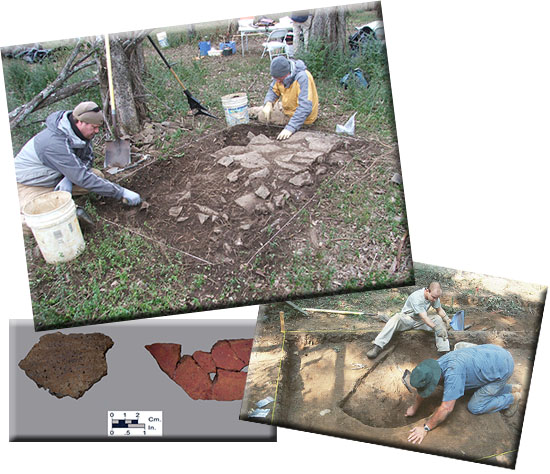
Most archaeological sites and historical properties recorded during Phase 1 surveys are determined to be not significant. Occasionally, a site or property requires additional work to make a determination.
The goal of Phase 2 testing is to gather the data necessary to make a determination of significance, generally following criteria established for the National Register of Historic Places (NRHP). The types of information gathered during testing include: (1) determining the age and cultural affiliation of the property; (2) determining the site's vertical and horizontal extent; (3) determining whether the property is intact, i.e. has integrity; and, (4) the classes of archaeological remains retrievable.
Phase 2 work often involves additional, in-depth archival research, especially with regard to historic period sites. Archival research may include a review of ownership history, insurance maps, and anecdotal or photo-documentary evidence.
Phase 2 fieldwork is usually more intensive than that conducted at the Phase 1 level. Methods vary depending on site specific characteristics. The testing program is often comprised of one or more of the following techniques: controlled surface collection, close interval shovel testing on a grid, hand-excavation of test units, and machine-assisted trenching or plowzone removal. Field notes, maps, drawings, and photographs accompany all aspects of fieldwork. Laboratory work includes preparing a detailed artifact inventory, diagnostic artifact analysis, and radiocarbon dating when appropriate.
Weaver & Associates has completed dozens of Phase 2 testing projects on prehistoric, historic, and multicomponent sites. Recent Phase II projects include extensive block excavation at Fort Pickering, a Civil War fort located in downtown Memphis, and testing of three stratified, prehistoric sites near the Buffalo River in western Tennessee.







